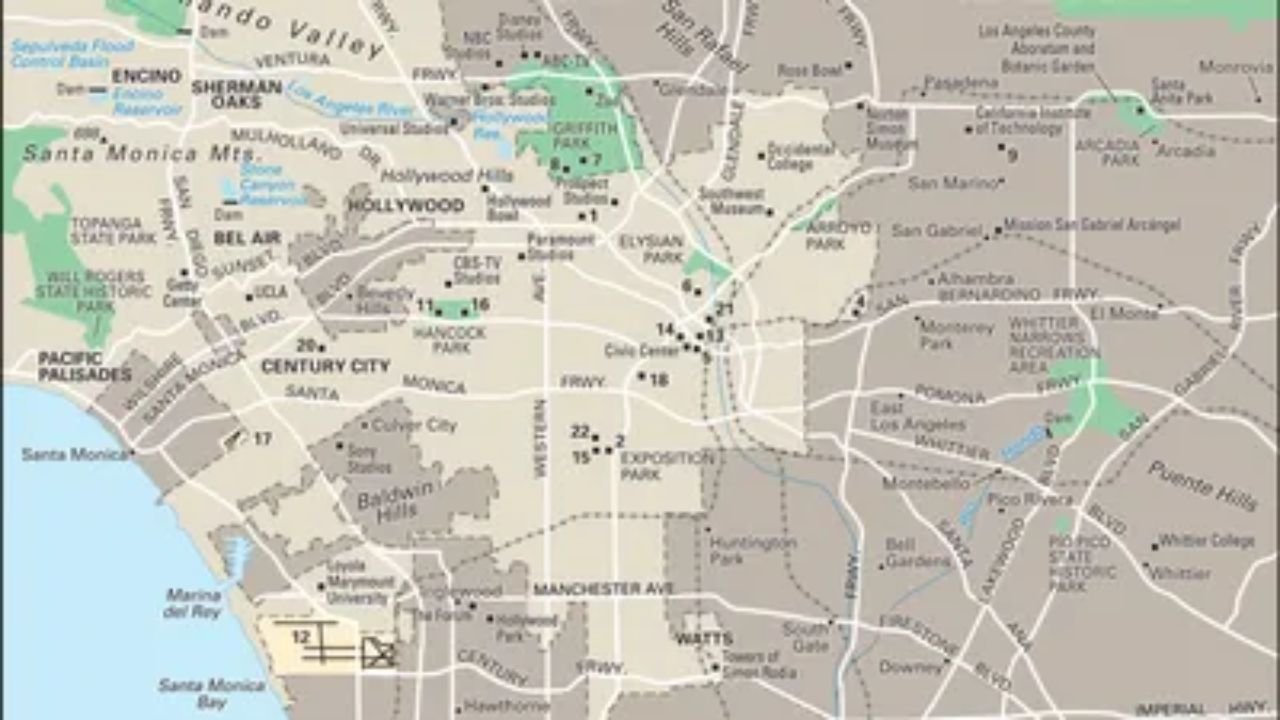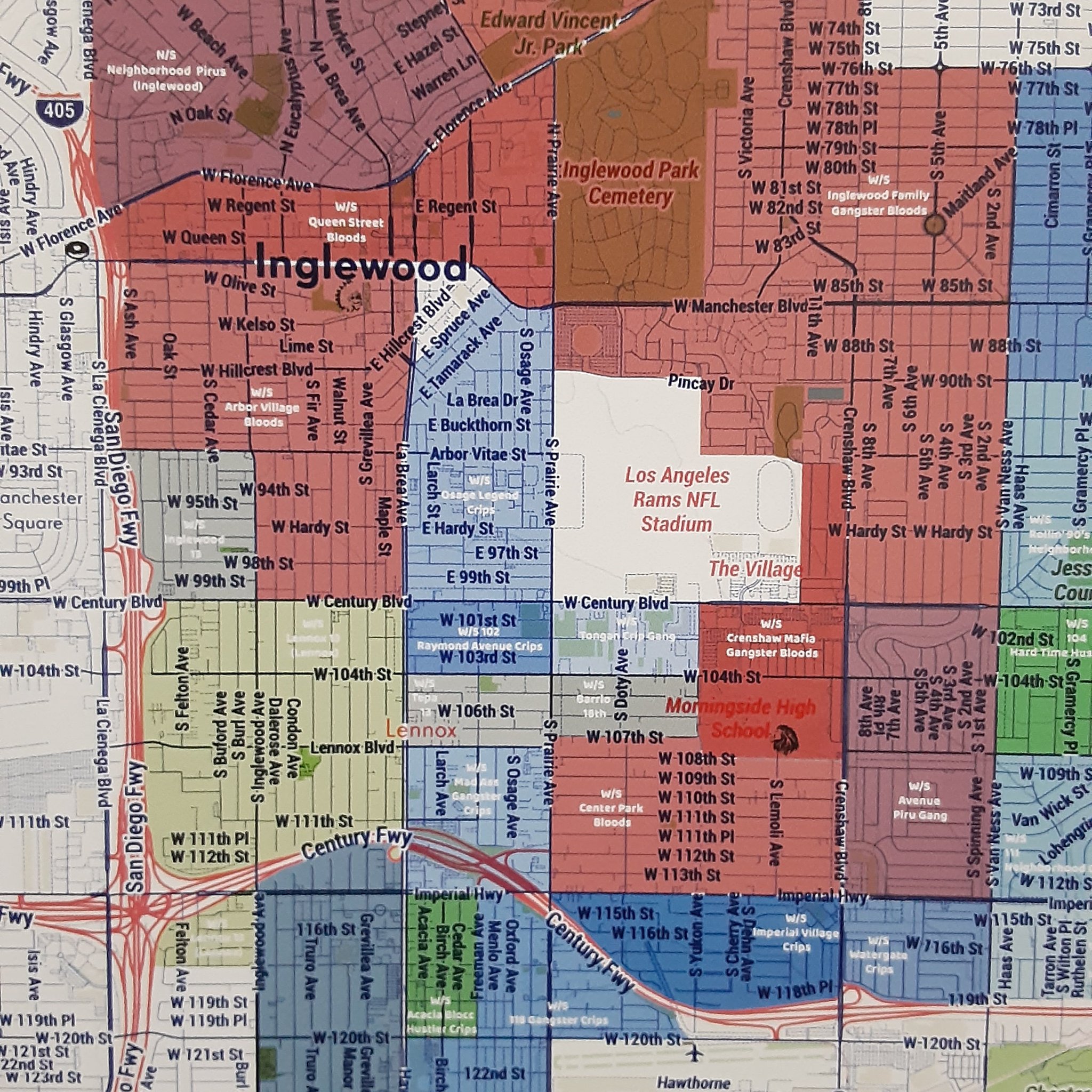La Gang Map: Your Ultimate Guide To Exploring The Streets Of Los Angeles
Ever wondered what it's like to dive deep into the world of LA's gang territories? Well, buckle up because we're about to take you on a wild ride through the streets of the City of Angels. La gang map is more than just a guide; it's your key to understanding the complex web of neighborhoods, territories, and histories that shape this vibrant yet intricate city. Whether you're a curious traveler, a history buff, or just someone who loves uncovering hidden stories, this article has got you covered.
Los Angeles isn't just about sunshine, beaches, and Hollywood glitz. Beneath the glimmering surface lies a rich tapestry of cultures, communities, and, yes, gangs. The la gang map offers an insider's look at how these groups have influenced the city's landscape over the years. It's not all doom and gloom though; this map is a fascinating study of human resilience, adaptation, and the struggle for identity in a rapidly changing urban environment.
So, why should you care about the la gang map? Well, understanding the dynamics of these territories can help you navigate the city more safely and respectfully. Plus, it's a great conversation starter at parties. Who knew learning about gang territories could be so intriguing? Let's dive in and uncover the layers of this complex city together.
Read also:Why Patricia Heaton Looks So Tired The Real Story Behind Her Exhaustion
What Exactly is a La Gang Map?
Let's break it down for ya. A la gang map is essentially a visual representation of the various gang territories that exist within the city of Los Angeles. Think of it like a treasure map, but instead of gold, you're looking at different neighborhoods and their respective affiliations. These maps are crucial tools for law enforcement, researchers, and even curious citizens who want to understand the socio-political dynamics of the city.
These maps don't just show boundaries; they tell stories. They reveal how certain areas have evolved over time, how gangs have shifted their influence, and how communities have responded to these changes. It's like a living, breathing document that reflects the pulse of the city. So, whether you're a student of sociology or just someone who loves maps, the la gang map has something for everyone.
Why is the La Gang Map Important?
Here's the deal: the la gang map isn't just a cool artifact for collectors. It plays a significant role in public safety and community development. By understanding the geography of gang territories, law enforcement can better allocate resources and implement strategies to reduce violence. For researchers, these maps provide valuable data for studying urban sociology and the impact of gangs on local communities.
And let's not forget the everyday citizens. Knowing the lay of the land can help people navigate the city more safely and make informed decisions about where to live, work, or visit. It's all about awareness and respect. By acknowledging the existence of these territories, we can foster a more harmonious and understanding society. Plus, it's just plain interesting to see how different areas of the city have their own unique stories and histories.
History of Gangs in Los Angeles
Before we dive deeper into the map itself, it's important to understand the history of gangs in LA. The city has a long and complex relationship with organized crime, dating back to the early 20th century. Gangs have evolved over the years, influenced by factors such as immigration, economic conditions, and political changes.
From the infamous Bloods and Crips to smaller neighborhood crews, each group has its own story and significance. Understanding this history is crucial to grasping the current landscape of gang territories. It's not just about turf wars; it's about the socio-economic factors that have shaped these communities over decades. So, buckle up for a quick history lesson that will give you a deeper appreciation for the la gang map.
Read also:Nude Pictures Of Reba Mcentire The Facts The Myths And The Real Story Behind It All
How to Read a La Gang Map
Now that we've got the basics down, let's talk about how to actually read one of these maps. It's not as straightforward as you might think. Each map is like a puzzle, with different symbols and colors representing various gangs and territories. Some maps even include annotations and notes that provide additional context.
Here are a few tips to help you navigate the la gang map:
- Look for color-coded sections that represent different gang affiliations.
- Pay attention to boundary lines, which indicate where one territory ends and another begins.
- Check for annotations or notes that provide historical or cultural context.
- Use the map as a starting point for further research; it's a great tool for understanding the bigger picture.
By learning how to read these maps, you'll gain a deeper understanding of the complex relationships between different groups and how they interact within the city. It's like unlocking a secret code to the city's hidden layers.
Tools and Resources for Exploring the Map
So, you're ready to dive in, but where do you start? Fortunately, there are plenty of tools and resources available to help you explore the la gang map. From online databases to physical maps, there's something for everyone. Here are a few options to consider:
- Online Mapping Tools: These platforms allow you to zoom in and out, explore different layers, and even overlay other data sets for a more comprehensive view.
- Printed Maps: If you prefer the old-school approach, printed maps can be a great way to get a tactile sense of the city's layout.
- Research Papers and Articles: For those who want to delve deeper, academic papers and articles can provide valuable insights into the history and significance of gang territories.
By utilizing these resources, you can enhance your understanding of the la gang map and the stories it tells. It's like having a personal guide to the hidden world of LA's gang territories.
The Impact of La Gang Map on Public Policy
Let's talk about the bigger picture. The la gang map has had a significant impact on public policy in Los Angeles. By providing a clear and detailed view of gang territories, these maps have helped policymakers make more informed decisions about resource allocation, law enforcement strategies, and community development initiatives.
For example, maps have been used to identify high-risk areas where intervention programs can be targeted to reduce gang-related violence. They've also been instrumental in fostering dialogue between law enforcement, community leaders, and residents. By bringing everyone to the table with a shared understanding of the landscape, these maps have helped build trust and collaboration.
Case Studies: Real-World Applications
To see the impact of the la gang map in action, let's look at a few case studies. In one instance, a local community organization used a gang map to identify areas where youth were at high risk of joining gangs. They then implemented a series of programs aimed at providing positive alternatives and mentorship opportunities. The result? A significant reduction in gang recruitment in those areas.
In another case, law enforcement agencies used gang maps to coordinate their efforts more effectively. By sharing data and resources, they were able to reduce response times and improve overall safety in targeted neighborhoods. These examples demonstrate the real-world applications of the la gang map and its potential to make a positive difference in the community.
Controversies Surrounding the La Gang Map
Of course, not everything is sunshine and rainbows. The la gang map has its fair share of controversies. Some critics argue that these maps can perpetuate stereotypes and stigmatize certain communities. Others worry about the potential misuse of this information by individuals or organizations with ulterior motives.
It's a delicate balance. While the maps provide valuable insights, they must be used responsibly and with sensitivity to the communities they represent. This is why education and awareness are so important. By understanding the potential pitfalls, we can work towards using these maps in a way that benefits everyone.
Addressing Concerns and Misconceptions
So, how do we address these concerns? Education is key. By providing context and historical background, we can help people understand the complexities of gang territories and the communities they affect. It's also important to involve community leaders and residents in the conversation, ensuring that their voices are heard and respected.
Additionally, guidelines and regulations can be put in place to ensure the responsible use of gang maps. This might include restrictions on who can access the maps, how they can be used, and what information is included. By taking these steps, we can mitigate the risks and maximize the benefits of the la gang map.
The Future of La Gang Map
As technology continues to evolve, so too will the la gang map. Advances in data collection and analysis are making it easier to create more accurate and detailed maps. This means we can expect to see even more sophisticated tools for understanding gang territories in the future.
But it's not just about the technology. The future of the la gang map also depends on our willingness to engage with the communities it represents. By fostering open dialogue and collaboration, we can ensure that these maps are used in a way that promotes peace, understanding, and positive change.
Emerging Trends and Innovations
Looking ahead, there are some exciting trends and innovations on the horizon. For example, the use of artificial intelligence and machine learning could revolutionize how we analyze and interpret gang map data. These technologies could help identify patterns and trends that might not be immediately apparent to the human eye.
Additionally, there's a growing emphasis on community-driven mapping initiatives. These projects involve residents in the creation and interpretation of maps, ensuring that their perspectives and experiences are accurately represented. This collaborative approach holds great promise for the future of the la gang map.
Conclusion: Why You Should Care About the La Gang Map
So, there you have it. The la gang map is more than just a tool for understanding gang territories; it's a window into the soul of Los Angeles. By exploring these maps, we gain insights into the city's history, culture, and the challenges it faces. It's a fascinating journey that offers something for everyone, whether you're a student, researcher, or just a curious citizen.
Now it's your turn. Leave a comment, share this article, or check out some of our other content on urban sociology and community development. Together, we can continue to learn and grow, fostering a more informed and compassionate society. Thanks for joining me on this wild ride through the streets of LA. Until next time, stay curious and keep exploring!
Table of Contents
- What Exactly is a La Gang Map?
- Why is the La Gang Map Important?
- History of Gangs in Los Angeles
- How to Read a La Gang Map
- Tools and Resources for Exploring the Map
- The Impact of La Gang Map on Public Policy
- Controversies Surrounding the La Gang Map
- Addressing Concerns and Misconceptions
- The Future of La Gang Map
- Emerging Trends and Innovations


